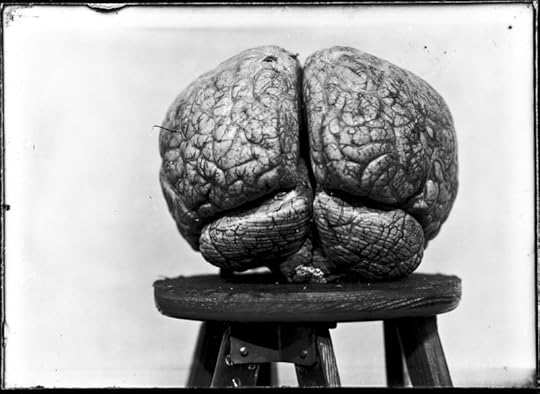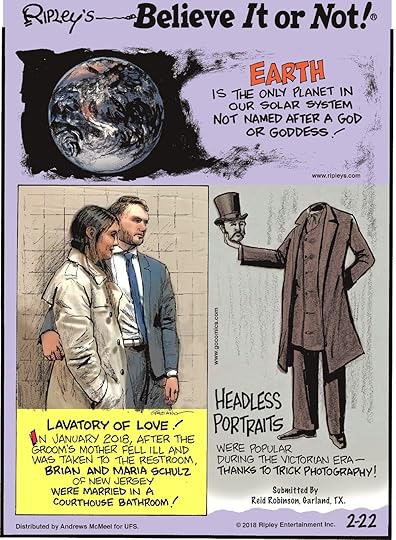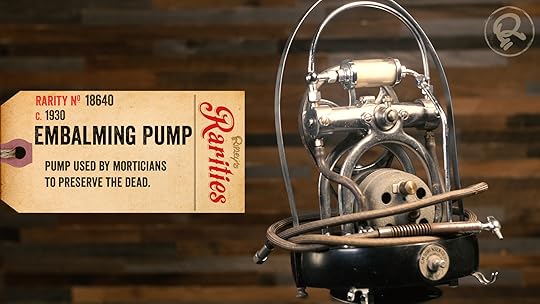Ripley Entertainment Inc.'s Blog, page 360
February 23, 2018
Could Your Fan Kill You in Your Sleep? South Korea Believes So!
Featured in Ripley's Believe It or Not!

Believe it or not, it is popular belief in South Korea that if you leave a fan on in an enclosed room it could suck out all of the air and…kill you!
The origins of this wives’ tale are unclear, but the fear of death-by-fan has been around since electric fans were introduced to Korea in the 1930s. Some suggest that it was propagated by the South Korean government to curb the use of electricity during the 1970s energy crisis.
The Buzz
How exactly could an electric breeze be fatal?
Some South Koreans believe the cold air circulating could cause hypothermia, leading to organ failure. Others think that oxygen is sucked out of the room, causing suffocation. It is even believed that these blades of death convert oxygen molecules into carbon dioxide.
These fears are not taken lightly. Manufacturers equip fans with sleep timers, the media covers fan deaths and South Korea’s Consumer Protection Board has even issued warnings.
Father-Daughter Bonding
In 2008, Chun Rim, a professor at the Department of Nuclear and Quantum Engineering at the Korea Advanced Institute of Science and Technology, decided to put fan death to the test. Having a hard time trying to find test subjects willing to challenge death, Rim used his very own 11-year-old daughter. Checking her vitals every five minutes throughout the night, they remained close to constant and the Rim family now sleeps soundly with fans on.
Some Merit?
During heat waves in the 80s and 90s, the Environmental Protection Agency issued a warning against fans. In their Excessive Heat Events guidebook, the EPA warned that Americans should not direct the flow of portable electric fans toward themselves when a room is hotter than 90 degrees, suggesting that fans could evaporate moisture quickly under those conditions, leading to dehydration.
Could there be some merit to South Korea’s fear of fans or is this just another cultural curiosity?
Source: Could Your Fan Kill You in Your Sleep? South Korea Believes So!
Man Burns Down House Trying to Smoke Out Skunks
Featured in Ripley's Believe It or Not!

[February 18-24th, 2018] A woman gives birth on the radio, a man burns down his house chasing skunks, and Apple employees keep walking into glass walls.
Giving Birth on the Air
Robert Ripley was known for radio stunts, like broadcasting underwater or from a hot-air balloon, but he never gave birth while on the air. Cassiday Proctor, a host on the morning-drive show Spencer’s Neighborhood went into labor and a nurse held up a phone to share the labor process on air. Thankfully it only took four minutes.
Having a pretty great Wednesday….
A post shared by Cassiday Proctor (@radiocassiday) on Feb 21, 2018 at 8:33am PST
Neanderthal Cave Paintings
A group of cave drawings in Spain dated to over 64,000 years ago were long thought to be the work of ancient humans, but researchers are now giving credit to a new artist: Neanderthals. These are now the oldest paintings attributed to Neanderthals ever found. This adds to mounting evidence that Neanderthals had their own complex cultures along with ancient humans.

“Genius” Bar
Apple’s new business headquarters is a ring-shaped building paneled with glass. Glass that Apple employees seem to keep running into while staring at their iPhones. Some began putting sticky-notes on the glass to see them better. Notorious for their beauty over function philosophy, however, management ordered them removed.

Transparent Fashion Attempt
Seemingly out of ideas, the fashion brand Céline showed off a clear plastic bag with their name on it at fashion week. Priced at $600, you’re mostly paying for the name. The bag hit a Nordstrom retailer in Seattle this week, meaning you can snag your very own, or just pick a similar one up at the grocery store.
Backstage Summer 18 Collection #CelineSummer18 #celine
A post shared by Céline Official (@celine) on Oct 5, 2017 at 12:28am PDT
He Couldn’t Smell the Smoke?
A Michigan man’s crawlspace had recently become infested with a surfeit of skunks, leading him to take desperate measures to clear them out. Instead of calling a professional, he threw a smoke bomb under his house which quickly started a fire burning down the rental home. The skunks made it out safely.

CARTOON 02-23-2018
February 22, 2018
Science Says No, Your Urine Is Not Sterile
Featured in Ripley's Believe It or Not!

Or Not
In today’s world many misconceptions have been perpetuated—becoming modern day “facts”—when, in reality, myths and hearsay have taken over. Sorry to burst your bubble, but in this weekly column, Ripley’s puts those delusions to the test, turning your world upside down, because you can’t always…Believe It!
Today: Your pee isn’t sterile.
Urine Is Not Sterile
Despite the assertions of urine-imbibing survival experts, the science says that urine is, in fact, not sterile.
The myth was popularized by the meme-ification of Discovery channel star Bear Grylls’ tendency to consume his own urine. In episode 13, during a trip to Australia, he performs the stunt, stating it’s his “first time” doing so, and that “it’s safe to drink.”
This stunt would be repeated multiple times throughout the show in what, at times, seemed somewhat needless or trivial.

As these posts blazed across the Internet, there was always someone in the comments stating it was fine because “urine is sterile.”
Started by Doctors
This “fact” sprang from the development of urinary tract infection tests by epidemiologist Edward Kass. He began procedurally testing surgery patients’ urine and cleared them if they got a “negative” for bacteria. This lead many people to believe healthy urine was free from bacteria. This, however, was an oversimplification of the test, fooling patients and many doctors to this day about the true contents of people’s pee.

A negative result doesn’t mean there aren’t any bacteria at all, but instead that the bacteria falls below a certain threshold. Everything in or on the human body is contaminated with microbes. Even the placenta, the barrier protecting fetuses during pregnancy contains bacteria
Just because your pee isn’t sterile, however, doesn’t make it dangerous.
Much of the bacteria in the human body is essential to our bodily functions, especially digestion. Many of these germs are considered hereditary, being passed down by family members. This community of microbes is so complex that even shaking hands with someone can have a lasting impact on the germs living on your hand.
So despite containing germs, your pee is not dangerous unless you have something like a urinary tract infection, but we still wouldn’t recommend drinking it.
CARTOON 02-22-2018
February 21, 2018
Manchester City’s Amputee Soccer Star
Featured in Ripley's Believe It or Not!

Jamie Tregaskiss loves soccer. When he was six or seven, he kicked around his first ball and was soon on the field with friends. Taking to the sport quickly, he was 11 when he was scouted by Manchester City and put on a track headed for the pros.
Tragically, at 13, he felt sudden soreness and weakness in his left leg. At first, he shrugged it off as a soccer injury that would soon pass. As Tregaskiss began to suffer from rapid weight loss and fatigue, doctors decided to investigate further, eventually, they found osteosarcoma, a rare type of bone cancer.
Tragedy
Doctors tried to shrink the tumor, putting Tregaskiss through chemotherapy. He missed school and lost his hair, but the procedure wasn’t enough. Surgeons had to amputate his leg.
Sad he wasn’t able to play football during treatment, he was dumbfounded to think he would never be able to fulfill his dreams of becoming a professional soccer player.
“My dreams were crushed because I never thought there was a way I could become a professional.”
Representing Man City Again
In the hospital, Tregaskiss met another amputee patient. He introduced the crestfallen athlete to the world of amputee soccer. Watching his first game, Tregaskiss was impressed with how demanding and difficult the game looked.
“But I liked it, and went down to have a go once I was fit enough to.”
Amputee soccer is played on crutches, with athletes bounding down a slightly scaled down field. Players have to chase and kick the ball, jump for head-butts, and fight off other players all on one leg. Already trained to have excellent ball control and game sense, Tregaskiss has quickly become one of the best players in amputee soccer.

Playing for Manchester City’s team, he now travels around the world competing in the sport’s competitive league. You can keep with him on his Facebook fan page and on Instagram.
CARTOON 02-21-2018
February 20, 2018
Vintage 1930s Embalming Pump
A Brain Museum in Connecticut Features A Steak Signed By Pavlov
Featured in Ripley's Believe It or Not!

Many people enjoy signing their names on things to leave their mark. Nearly 100 years ago, Ivan Pavlov autographed a piece of steak using an electrical knife. That chunk of beef and other unusual items can be seen, basking in formaldehyde, at the Yale School of Medicine’s brain museum.
An Odd Autograph

Ivan Pavlov autographed a piece of steak using an electrical knife!
The Russian physiologist and Nobel prize winner, known for his study of dogs and the concept of the conditioned reflex, signed the piece of meat after observing the father of neurosurgery, Harvey Cushing, perform an operation in the 1920s.
Cushing was demonstrating the use of a new instrument, a Bovie knife, which he used to cauterize and cut brain tissue to reduce bleeding (a major cause of death at that time).
“At the end of the operation, he invited Pavlov to try it out for himself because that’s what guys do. They share toys,” Terry Dagradi, photographer & Cushing Center curator told Ripley’s. “You got a new instrument or a new shop tool and you’ve got to share it.”
Pavlov played with the electrical knife for a little bit, used it to sign the steak, and then gave it back to the surgeon.
“Of course, Cushing as a collector put it in a jar,” Dagradi explained.
Cushing’s obsession with preservation and documentation is why people can still see Pavlov’s steak today.
Cushing’s Collection
Cushing started collecting brains, tumors, and other items related to his work in 1902. The Cushing Center at Yale University in New Haven, Conn., contains thousands of neurological case studies and over 15,000 photographic negatives from the late 1800s to 1936.

A photo of a real brain from the Cushing Tumor Registry.
Retaining the specimens and tumors helped Cushing understand disease and the structure of the brain. He often asked patients to donate their brains so he could learn more about them and the pathology that affected them.
Spring Cerebrum Cleaning
Eventually, the brains in the pathology department were taking up too much space and were nearly thrown out. Fortunately, someone decided to store them in a subbasement at the Yale Medical School where they remained for several years.
In the early 1990s, medical students rediscovered them and it became a rite of passage to take a look at them. The specimens were eventually brought out into the open for people to look at in what became the Cushing Center.
“One of the things that’s quite beautiful about the collection is the glass jars that the specimens are in,” Dagradi noted. “They were probably mostly made in the ‘20s and so they’re very high-quality lead crystal.”
“Today I think what they use for these kind of specimen collections are Tupperware, believe it or not.”
Visitors are fascinated by the jars, which contain different colored solutions.
“We often get asked why the jars are all these different shades of gold and brown and sometimes a little green, and it’s because of the way the specimens are still interacting with the solution,” Dagradi noted. “That might have to do with the type of tumors or the interactions of the specimens themselves.”
How long are the brains and tumors expected to stay intact in their little bottles of formaldehyde?
“Some of these brains are already 100 years old. He started preserving tumors and brains around 1902. I’m hoping with us watching them and now that they’re in a much safer environment for preservation, indefinitely,” she explained.
Another remarkable thing in the collection are the eerie photographs of Cushing’s patients.

Two patient portraits from the Cushing Tumor Registry.
“Often they’re pretty stark portraits or closeups of scars or that sort of thing. But they also have a sort of poignancy and connection to the fact that the specimens, the brains, used to be in people—the people he tried so hard to save. They are also just a beautiful sort of accidental archive that really enriches the collection itself,” Dagradi pointed out.
A Skewered Skull
One thing the center features that’s not related to Cushing is a 3D model of the skull of one of the first patients to survive a traumatic brain injury: Phineas Gage. He was a railroad construction foreman who survived after an iron rod went through his skull in 1848.
“It went through his left frontal lobe. This gentle, well-mannered, logical young foreman turned into a rowdy, swearing, bawdy drunk. He’s sort of ground zero of traumatic brain injury science.”
The model and an accompanying book are used as educational tools for New Haven school children that teaches them the connection between neurosurgery and science.
The Cushing Center is open to public most days from 10 a.m. to 8 p.m. Weekly tours are also available.
By Noelle Talmon, contributor for Ripleys.com
Source: A Brain Museum in Connecticut Features A Steak Signed By Pavlov
CARTOON 02-20-2018
Ripley Entertainment Inc.'s Blog
- Ripley Entertainment Inc.'s profile
- 52 followers








